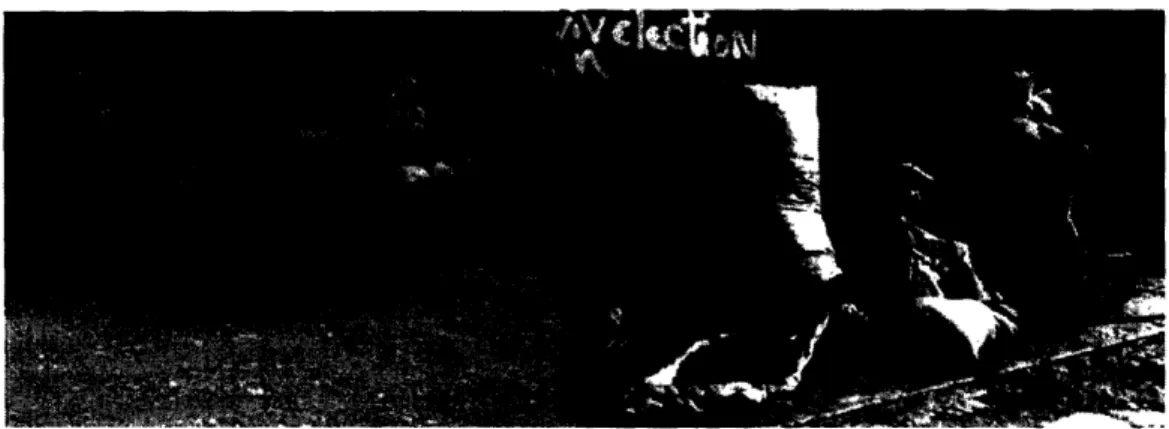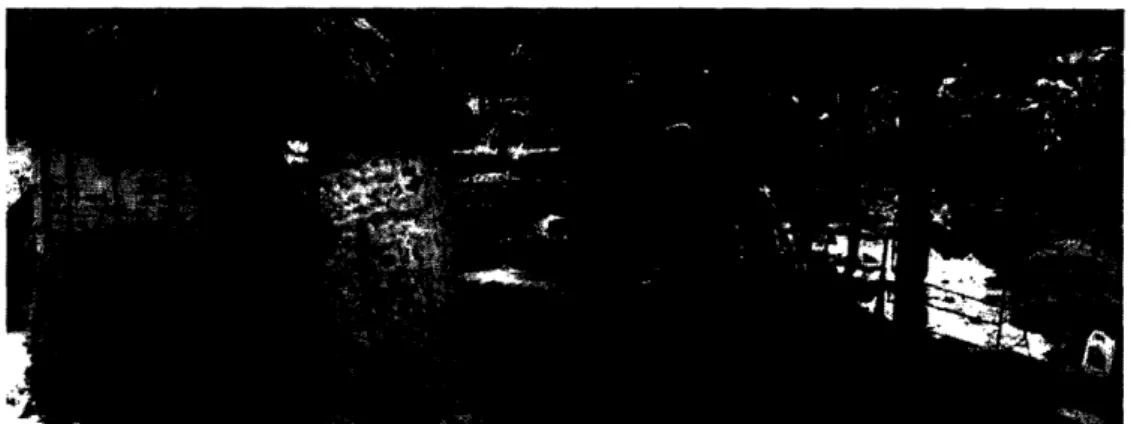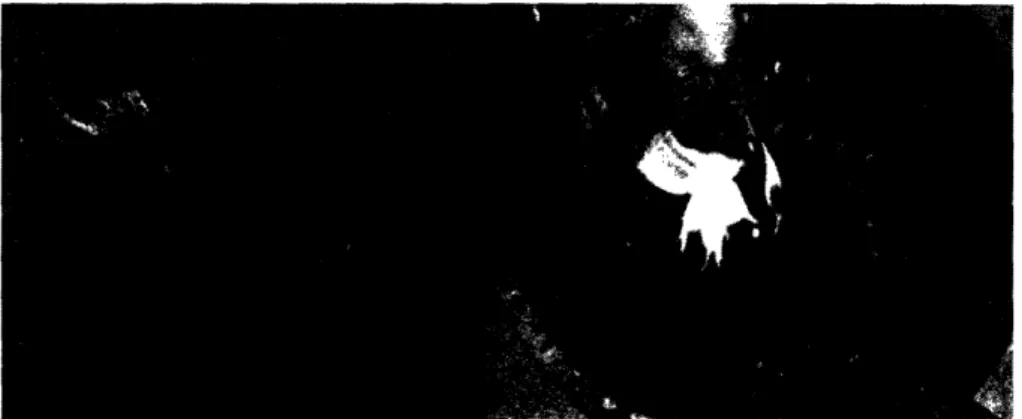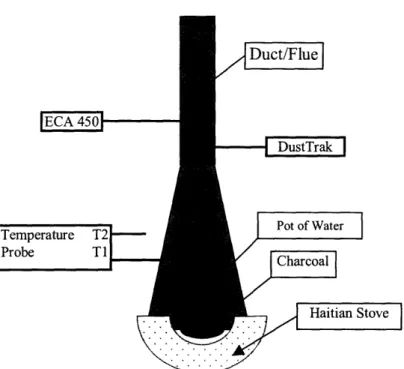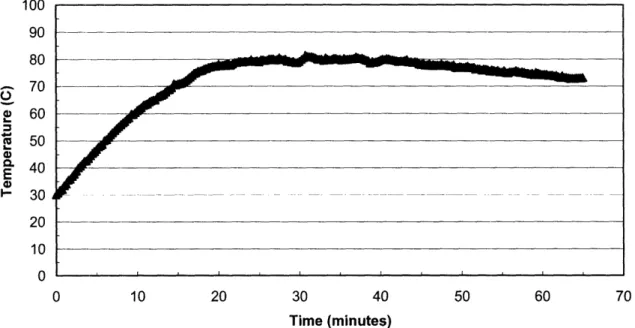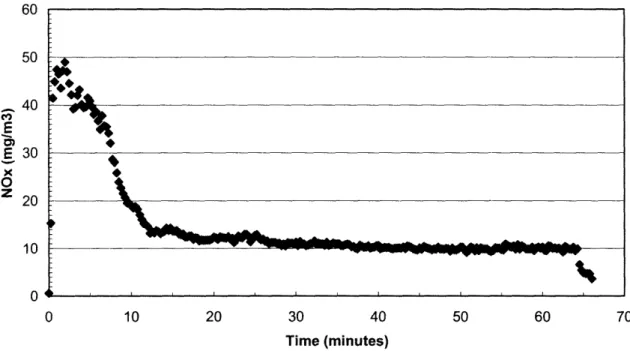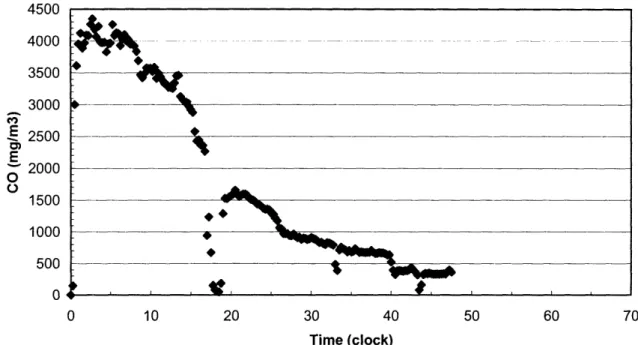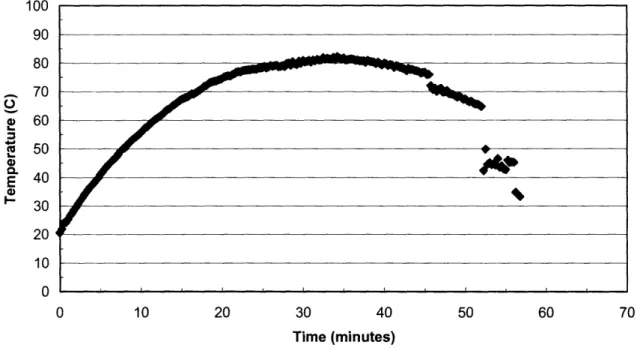A Comparative Analysis of Emissions from Bagasse Charcoal and Wood Charcoal
by
Andr6s Ramirez
Submitted to the Department of Mechanical Engineering In Partial Fulfillment of the Requirements for the Degree of
Bachelor of Science at the
Massachusetts Institute of Technology June 2005
C 2005 Andres Ramirez All rights reserved
MASSACHUSETTSi1T'Uf1 MASSACHUSETS INSTTE! OF TECHNOLOGY
JU08_005_
JUN 0 8 2005 , __... . d. -_ _. . ,0 The author hereby grants to MIT permission to reproduce and to distribute publiclypaper and electronic copies of this thesis document in whole or in part.
A
Signature of Author... ...
...
Department of Mecanical Engineering
May 6, 200 / C ertified by
...
.~d;~~
ff;~
...
. ..
....
.. ...
--..- -= David Wallace Associate Professor Thesis SupervisorAccepted by .Accepted~~ by ... oo...o...o.~oo...o~o~~ooo...~~o... -
-Ernest Cravalho Department of Mechanical Engineering Chairman, Undergraduate Thesis Committee
A Comparative Analysis of Emissions from Bagasse Charcoal and Wood Charcoal
by
Andrds Ramirez
Submitted to the Department of Mechanical Engineering On May 6, 2005 in Partial Fulfillment of the Requirements of the Degree of Bachelor of Science in
Mechanical Engineering
ABSTRACT
Haiti is the poorest country in the Western hemisphere and is in need of a cheap cooking fuel source. Currently, lump charcoal, the cooking fuel of Haiti, is made by carbonizing trees in ditches before selling the charcoal at market. However, Haiti is now 98% deforested and must find a way to prepare their food that does not destroy their land.
The idea for this new fuel comes from compressed and extruded carbonized bagasse, which was produced using an extruder developed in a senior product development class at MIT. Using this bagasse fuel, experiments were conducted to compare the combustion characteristics of the bagasse charcoal with wood charcoal.
Unfortunately, the heat released by the bagasse charcoal did not compare favorably with that of the wood charcoal, failing to raise 1L of water to boiling while the wood charcoal raised the water to boiling for 25 minutes.
Since the bagasse charcoal performed similarly to Kingsford brand charcoal, the emissions released were compared between these two fuels. Based on their averages, the bagasse charcoal emitted 1.4 times more CO, 1.6 times more SO2, and 2.3 times more particulates but only 17% of
the NOx emitted by Kingsford. Thesis Supervisor: David Wallace Title: Associate Professor
Table of Contents
1.0
Introduction
6
2.0
Prior Art
7
2.1
Why Haiti? Why Bagasse?
7
2.2 Health Concerns 8
2.3 The Charcoals 9
2.3.1 Kingsford Brand Charcoal 9
2.3.2 Haitian Wood Charcoal 10
2.3.3 Extruded Bagasse Charcoal 10
3.0
Experimental Setup
11
3.1
Duct Tower Setup
11
3.2
Open Air Setup
13
4.0
Experimental Procedure
_
14
4.1 Methods 14
5.0
Results and Analysis
15
5.1
Kingsford Charcoal - Duct Tower
15
5.2
Haitian Wood Charcoal - Duct Tower
17
5.3
Extruded Bagasse Charcoal - Duct Tower
21
5.4
Kingsford Charcoal - Open Air
22
5.5 Condensed Results 23
1.0 Introduction
Over the course of the past two years, Amy Smith, an instructor in the MIT Edgerton Center, has been pursuing the development of a process and machine that would supply a substitute cooking fuel to Haiti. This machine would create charcoal briquettes of carbonized bagasse, the bamboo-like husk that is currently the waste product of sugarcane processing, for use as a cooking fuel. The hope is that this will eventually provide a fuel that is more
environmentally friendly and also more affordable to the people of Haiti.
In the Fall 2004 semester of the undergraduate mechanical engineering course 2.009: The Product Engineering Process (http://web.mit.edu/2.009), fifteen seniors at the Massachusetts Institute of Technology designed and prototyped an extrusion machine that promised to deliver the fuel that Ms. Smith and those in the Development, Design, and Dissemination Lab (D-Lab) had been trying to produce. After several promising tests, the next step was to see if the new fuel was a viable solution.
This report outlines the results of several combustion tests, the characterization of the emissions, and the ability to heat water for three charcoals: as a control, Kingsford brand
charcoal; the current wood charcoal used in Haiti; and the extruded bagasse charcoal substitution fuel. This is done with the hope of showing that the new fuel can provide 80% of the
2.0 Prior Art
2.1 Why Haiti? Why Bagasse?
Haiti is the poorest country in the Western Hemisphere with 80% of the population living in abject poverty.1 This, coupled with a high inflation rate, as made it difficult for people to purchase their necessary products, including their cooking fuel, which is estimated to consume roughly 14% of the average Haitian's annual income.
The fuel purchased for cooking is lump wood charcoal that is made by people who cut down trees and then carbonize them in dirt trenches. After digging the remains of the tree out of the earth, the resultant wood charcoal is packaged in sacks and sold at market to individual families. Unfortunately, this process has contributed to the massive deforestation of the country. With 98% of the landscape deforested, the monetary costs for those who live far from the remaining forestland, and the environmental costs for the country as a whole, are rising.
Figure 1: Mule transports -22 charcoal sacks (left) where they are then sold at market (right). Credit: Amy Smith.
Against this backdrop, the idea of processing the waste of the sugarcane industry was born. As an abundant cash crop, sugarcane is harvested at a rate of nearly six million tons per year and is widely available to nearly all Haitians. Currently, this waste husk is simply piled and
left to rot or burned in an open fire, but a process has now been created to carbonize the dried bagasse in an steel kiln and to compress the charcoal fines into briquettes. Since this is
producing fuel from the waste, this process and product will hopefully provide an alternative to the current practices in Haiti, allowing the land to recuperate while the people are able to spend less on purchasing their cooking fuel.
2.2
Health Concerns
The fiscal and environmental problems to be addressed by this new charcoal are not the only items of concern. Care must also be taken to ensure that the briquettes produced from carbonized bagasse are minimally no more harmful to their users than the wood charcoal currently available. This stems from a concern that charcoal is the primary cooking fuel source in Haiti, thus it will be in use around people constantly.
Several studies examining the health effects of solid fuel burning, including the use of charcoal for food preparation, have detailed the risks of chronic exposure to the emissions of the fuels. According to a study by Ezzati and Kammen, "acute respiratory infections are the leading cause of the global burden of disease and account for 6% of the global burden of disease and mortality.2" Most of this comes from the developing world, including India, Africa, Central and South America, and Haiti.
Other studies have shown that the emissions from indoor cooking smoke can lead to "chronic obstructive pulmonary disease, lung cancer, asthma, cancer of the nasopharynx and larynx, tuberculosis, perinatal conditions and low birth weight, and diseases of the eye such as cataract and blindness.3 With all of these negative consequences, and since roughly 25% of the population of Haiti cooks in a walled enclosure of some kind, the bagasse charcoal must at minimum be no more harmful than the Haitian wood charcoal currently used.
Figure 2: Enclosed kitchen (left) and open kitchen (right) Credit: Amy Smith.
Commonly known hazardous emissions such as CO, NOx, and SO2were chosen for testing and comparison between the three charcoals, along with a class of fine particulates whose aerodynamic diameters are less than 2.5 tm, also designated PM2.5. This class of particulate matter was chosen because of its ability to pass deeply into the lungs and often carry nitrates, sulfates, metals and other contaminates that are adsorbed onto its surface into the body.4
Figure 3: A young girl looks on as hand formed bagasse charcoal bums. Credit: Amy Smith.
2.3
The Charcoals
2.3.1
Kingsford Brand Charcoal
In order to relate all of the data to the common experiences of the American reader, and to provide a relatively standard base of comparison, Kingsford Brand Charcoal was used as the
control fuel for the experiment. Kingsford is a popular charcoal briquette in the US and lists wood char, mineral char, mineral carbon, limestone, starch, borax, sodium nitrate, and sawdust among its ingredients.5
2.3.2
Haitian Wood Charcoal
As noted in Section 2.1, the charcoal of choice in Haiti is a lump charcoal produced from the carbonization of whole trees in the countryside. The charcoal is created when someone fells a tree, places it in an earthen pit, and covers it with soil so that the tree can bum in a low oxygen environment. After a day or two, the tree is dug up and the charcoal removed. This charcoal, still in the shape of branches in some cases, is then broken into fist-sized pieces and sold at market.
2.3.3
Extruded Bagasse Charcoal
The bagasse charcoal that was used for the experiment is created in a manner that is similar to that of the wood charcoal, with the exception that the carbonized fuel is bagasse, the bamboo-like stalk remnants from sugarcane processing. The production of this charcoal is as
outlined in Fuelfrom the Fields: A Guide to Converting Agricultural Waste into Charcoal
6
Briquettes, a field manual created by students working in D-Lab at MIT6. In summary, waste bagasse is carbonized in an oil drum kiln for 24 hours. After that time, the charcoal stalk and
fines are crushed with a sturdy stick into a more manageable powder. The powder is then mixed with cassava binder. The result is a damp slightly sticky mixture. This mixture is then formed
and compressed by the screw extrusion machine prototype built by the members of 2.009 who helped in the project. The charcoal assumes a cylindrical shape and is set outside until dry.
3.0 Experimental Setup
3.1 Duct Tower Setup
In order to measure all of the emissions from each of the charcoals used, a duct system, as shown in figure 5, was built and placed over the charcoal during the burn tests. This allows for cataloguing of an absolute worst-case scenario and is free of "real life" variables, such as the breeziness of the test site in-between tests. This duct system was formed out of galvanized steel duct parts joined together to create a flue with a 10" square opening just above the fire and a 3" diameter pipe opening at the end of the exhaust point.
The duct system had a 10" square opening at the base, which was 7" tall before the walls of the duct reduced to an 8" diameter opening. An 8" to 6" reducer was joined to this opening and then to a 10.5" length of 6" diameter tubing. This was repeated with a 6" to 4" reducer, which was joined to a 10" length of 4" diameter pipe. Finally, a 4" to 3" reducer was attached
and a 22" length of 3" diameter tubing placed on top of the duct. Two holes were made in the duct, one 6" and the other 7" from the last reducer for the probe nozzles of a combustion analyzer and a particulate monitor. The combustion analyzer was a Bacharach ECA 450 (http://www.bacharach-inc.com/eca450.htm) and the particulate monitor was a TSI DustTrak (http://www.tsi.corn/products/dusttrak.aspx).
After securing the probes and sensors, all of the joints were then sealed with aluminum duct tape, to limit the escape of flue gases through the walls. During a test, this aluminum duct tower completely surrounds the charcoal and the pot of water sitting directly on the hot charcoal.
The pot is made of stainless steel and is 3.5" deep and 7" in diameter. It held 1L of tap water and was positioned such that the water was as close to level as possible. The pot had no
Teflon treated surfaces of any kind and sat directly on 300g of hot charcoal, which lay burning at the bottom of a Haitian stove. The stove is 16.25" in diameter and 3.5" deep. The bottom of the
stove has many holes, creating a grate so that ash and broken charcoal pieces can fall through the holes without building up in the stove.
Figure 4: Haitian stoves without (left) and with charcoal (right) Credit: Amy Smith (left) and the 2.009 Team (right)
Finally, two temperature probes are used to record the temperature during the test. Both probes were stainless steel temperature probes from Vernier and were used in conjunction with the Vernier LabPro interface. One temperature probe passed through a hole in the duct's wall and was suspended with its tip immersed in the water such that it did not make contact with the pot. This sensor recorded the water's temperature as the charcoal heated it. The other probe was left free to record the ambient temperature of the environment during the combustion test.
Figure 5 shows the layout of the setup and the placement of the sensors. Note that boxes with thick lines represent the equipment and the thick lines that extend from the boxes represent the actual probes.
Duct/Flue
D u t .a
Temperature T2
Probe T1
Figure 5: Setup of the Duct Combustion Test
3.2 Open Air Setup
The open-air setup was similar to the duct tower setup, with the obvious difference that this test did not use the duct tower at all; instead, the emissions were free to blow wherever the wind chose. The stainless steel pot still held L of tap water and sat on 300g of hot charcoal, but in this experiment, the duct enclosure was removed, and the emissions and particulate sensors were moved away from the fire. In this setup, those two probes were placed on stands that put them 28" away from the center of the fire and 28" off of the ground. This was meant to
approximate the height of one who is kneeling to tend to the fire or to the meal being prepared in the pot. The temperature probes were still used as before, with one logging the ambient air temperature and the other logging the temperature of the water. In order to make this experiment a closer approximation of what would be found in Haiti, an open walled sun shelter was pitched. This shelter stood 98" tall and covered an area 120" x 120" on the ground. This shelter was
meant to approximate the open kitchen shown in Figure 2, and the experiment was conducted under its roof.
4.0 Experimental Procedure
4.1 Methods
Although the setup was different for the two types of tests performed, the basic
methodology of the experiments remained unchanged. First, the charcoal was put in the center of the cooking stove in a pyramid. It was then sprayed along all surfaces with lighter fluid and left to stand for several minutes. During this time, the probes and sensors were readied for the trigger to begin logging data. All of the data loggers were set to take a recording every 15 seconds for a minimum of two hours.
With the sensors now setup, the charcoal was lit, fanned, and stoked until the center of the stack glowed orange and developed a coating of gray ash. This time varied from fuel to fuel, but once this point was reached, the charcoal was made level in preparation for the pot of water. The sensors were moved to their final positions, depending on the type of test, and then all trigger buttons were pressed as closely together as possible.
Throughout all of the experiments, the charcoal would be visually inspected to make sure that it still glowed orange. When the coals would lose their glow, they would be fanned for
several minutes, replicating what one would do while preparing a meal, but that signaled that the test was drawing to a close. All of the experiments were stopped once the charcoal lost the orange glow for several minutes, and the water temperature began to fall or the charcoal gave way under the pot of water and self-extinguished.
5.0 Results and Analysis
5.1
Kingsford Charcoal - Duct Tower
The first test involved the combustion of the control fuel, the Kingsford Brand charcoal. Due to this charcoal's density, the 300g pyramid in the center of the Haitian stove was the smallest of all the tests. As a consequence, the temperature of the water barely rose above 80 C; in fact it took over 25 minutes to reach 80 C and was only able to stay around that temperature for another 20 minutes. See Figure 6 below for the graph of the temperature of the water.
IUU 90 80
a 70
L 60 m 50 aL a 40 30 20 10 nU
-.
..
_ __
0 10 20 30 40 50 60 70 Time (minutes)Figure 6: Temperature of Water during Kingsford Duct Tower Experiment
Although the Kingsford did not produce enough heat to boil the water, it was able to stave off the cooling of the water to the slowest rate among all three fuels.
The Kingsford also did not produce a great deal of emissions, when compared to the other two fuels, producing the lowest average emission of CO at 1355mg/m3 and S02 at
~ll III !
31.95mg/m3. Both were produced without a great deal of fluctuation in their outputs throughout the course of the experiment and are left to the appendices for inspection. The other two
emissions tested, however, showed more interesting results.
The graph of the measured NOx emissions, for example, were startling. The production of NOx emissions topped out at 58.95 mg/m3 within the first two minutes of the experiment and then dropped to below 15 mg/m3 before ten minutes had passed. Figure 7 shows the precipitous drop below. Virtually all of this was NO. Since it was present only at the beginning, the threat probably comes from the flames before they settle into completely orange coals.
bu 50 40 co E 30 x
0
z
20 10 n v 0 10 20 30 40 50 60 70 Time (minutes)Figure 7: NOx emissions of Kingsford. Note the large drop in the first ten minutes.
The other contaminant that experienced a quick drop was PM2.5. This drop is
proportionally larger than the previous example, as the max PM2.5level was over 44mg/m3 and then dropped to under 0.05 mg/m3.
200 180 _ 160 E 140 E 120
100
_
cU 80 0 40 20 0 0 10 20 30 40 50 60 70 Time (minutes)Figure 8: Kingsford charcoal PM2.5levels
5.2
Haitian Wood Charcoal
-Duct Tower
The Haitian wood charcoal proved to be the best performer of all three fuels. Due to its small, thin pieces, it was very easy to build a pyramid of charcoal. Also, with the larger
pyramid, the orange coals inside were well protected, burned hotter, and spread easily throughout the fuel. The larger orange center carried through to solid heating performance, as this was the only fuel to lift the water to boiling, reaching that point in 8 minutes and staying there for 25 more. This fuel did such a good job that the duct tower had to be removed several times to lower the temperature probe further into the pot, since the charcoal was burning away and the water was leaving the pot as steam, thus lowering the water level on two fronts. This removal of the duct tower resulted in spurious data points where the sensors were not reading the emissions or temperatures for the experiment around minutes 20, 35, and 40 of the experiment.
100 80 -"_ 0 A~~~~ 8O ,a, , . . . .
... 70
A 0 10 20 30 40 50 60 70 Time (minutes)Figure 9: Haitian wood charcoal water temperature
The increase in heat also led to an increase in particulates released as the Haitian wood charcoal produced on average nearly 8 times more particulates than the fuel that released the second most emissions. Also, although its average releases of CO, NOX, and S02 were not the highest, the Haitian wood charcoal did release the highest maximum amount of each pollutant before dropping low enough that the average did not finish as the highest of the three. This is assumed to be because of the large amount of orange coals at the beginning of the test compared to the other fuels, since the levels dropped over time.E
40
30· 2o 10 0 0 10 20 30 40 50 60 70 Time (minutes)
Figure 9: Haitian wood charcoal water temperature
The increase in heat also led to an increase in particulates released as the Haitian wood charcoal produced on average nearly 8 times more particulates than the fuel that released the
second most emissions. Also, although its average releases of CO, NOX, and S2 were not the highest, the Haitian wood charcoal did release the highest maximum amount of each pollutant before dropping low enough that the average did not finish as the highest of the three. This is
assumed to be because of the large amount of orange coals at the beginning of the test compared to the other fuels, since the levels dropped over time.
4500 4000 3500 3000 E 2500 Cm E
O2000
0
1500 1000 500 0 0 10 20 30 40 50 60 70 Time (clock)Figure 10: Haitian wood charcoal CO emissions
10 20 30 40 50 60 70
Time (clock)
Figure 11: Haitian wood charcoal NOx emissions
50 40 M E 30 C3 E x
0
z
20 10 0 0Ift
-jr -- w-W
* 4M -00 0 I I % - I I I - . I I10 20 30 40 50 60 70
Time (clock)
Figure 12: Haitian wood charcoal SO2emissions
0 10 20 30 40 50 60 70
Time (clock)
Figure 13: Haitian wood charcoal PM2.5levels
180 160 140 120 100 80 60 E ED E N
0
co 40 20 0 0 200 180 160 140 120 100 80 60 E E 0 (U 0 -._ 40 20 0 -- - ---- 1-- - -- , --- - --- - --- - ---- -- ---Is
N
6%
* 9 '% IN lo 1 111 0It I I 45.3
Extruded Bagasse Charcoal - Duct Tower
The final fuel tested was the extruded bagasse charcoal. The hope of having created a viable substitution fuel was put on hold since the charcoal performed the worst in raising the temperature of the water, carrying an average temperature of 65.74 C and spending only 18 minutes around 80 C. This charcoal also allowed the water to drop in temperature the soonest of all the fuels and at the fastest rate.
This was disappointing expecially considering the results of the charcoal briquettes created during 2.009. The briquettes produced by the 2.009 design team were of higher density than the fuel burned for this experiment and had a surface texture more like the Haitian wood charcoal. Those briquettes, when burned were able to boil water for roughly 70 minutes and when shaped felt very much like wood charcoal.
100 90 80 70
_
60 50 E40 -l30
20 10 0 0 10 20 30 40 50 60 70 Time (minutes)Figure 14: Bagasse charcoal water temperature
Since the Haitian charcoal clearly outperformed the bagasse charcoal, the bagasse charcoal will be most directly compared to the Kingsford brand charcoal, both because of the
similarities in heating ability and because of the familiarity and repeatability of Kingsford charcoal performance.
First, both charcoals produced relatively stable levels of CO emissions; however, the average level emitted by the bagasse charcoal was 1.4 times higher than the Kingsford charcoal. A similar result was found when comparing the two fuels' emissions of SO2. The bagasse charcoal emitted an average of 1.6 times the average emissions level of the Kingsford charcoal. And when comparing their PM2.5levels, the bagasse charcoal released more than 2.3 times
Kingsford's particulates into the air, on average, even though the Kingsford's peak value was nearly double the bagasse's max value. The only area where the bagasse charcoal outperformed the Kingsford charcoal was in the release of NOx, where the bagasse charcoal only released approximately 17% of the Kingsford's emissions.
5.4
Kingsford Charcoal - Open Air
The open-air experiments were performed with the intention of discovering how much of the pollutants can be measured in a setting that resembles the real life application of the cooking fuel. Since there was not enough wood or bagasse charcoal to perform this experiment using those fuels, the Kingsford charcoal was used to model the exposure. The hope was that the percentage of emissions detected in this experiment could be compared to the results of the Kingsford duct tower experiment to find a ratio of expected exposure in an open kitchen.
Based on the results of the experiment, the open shade hut eliminates nearly 96% of the pollutants from the volume where one's head would be while stoking the fire or tending to the soup. The average measured CO value was 0.2% of the duct tower's average. NOx and SO2 average values were 3.67% and 3.73% of the worst-case scenario. Finally, the particulates averaged only 1.51% of the duct tower value. Using these values, the pollutant levels of the
bagasse charcoal in an open kitchen would be 3.8 mg/m3 CO, 0.09 mg/m3 NOx, 1.9 mg/m3 of SO2, and 0.087 mg/m3 of PM2.5.
5.5
Condensed Results
In order to better visualize all of the emissions of each fuel against each other, the results of each test are plotted in one graph in figures 15-19. This is done for temperature of the water and each type of emission. All data series with diamonds are for Kingsford brand charcoal, all with triangles are for the extruded bagasse charcoal, and all with serrated circles are for the Haitian wood charcoal.
100 90 80 70 o 60 <u5o E
0
40 .. 520 10 40 -30 20 10 0 0 10 20 30 40 50 60 70Time (minutes) * kingsford bagasse haitian
U
U
mu
20 30 40 50 60
Time (minutes) * kingsford * bagasse . haitian
Figure 16: Particulates released for all tests
0 10 20 30 40 50 60 70
Time (minutes) *I kingsford bagasse ; haitian
Figure 17: CO emissions for all tests
200 180 160 E 140 cm E 120 0 a 100 'B 80 0 1= 60 40 20 0 0 10 70 5000.0 4500.0 4000.0 3500.0 3000.0 2500.0 2000.0 a E E x
0
z
1500.0 1000.0 500.0 0.0OU 50 ; 40 E 0 E 30 x
0
Z 20 10 0 0 10 20 30 40 50 60 70Time (minutes) * kingsford bagasse :, haitian
Figure 18: NOx emissions for all tests
200 180 160 140 E 120 . E 100
-0
80 60 20 40 0 10 20 30 40 50 60 70Time (minutes) | kingsford bagasse lei* haitian
6.0 Conclusion
Although the performance results of the bagasse charcoal were disappointing, there is still hope that the process and machine can be refined to the point that bagasse charcoal is a viable cooking fuel substitute. As currently made, the bagasse charcoal releases more toxins into the air than the Kingsford charcoal that is so common throughout the United States does. There are several caveats about that result, the first being that this fuel sample was not compressed as tightly as samples made in the class 2.009. Hopefully, a properly compressed briquette would provide better heating capacity and fewer pollutants. Also, the material used to make the briquettes did not appear to be fully carburized, which may also have contributed to the emissions level being higher than that of the Kingsford brand charcoal.
Finally, since the bagasse charcoal is less dense, a greater volume can be used to reach 300g. If that remains the case, I recommend that the extruded fuel be cut into smaller pieces while still wet so that the pyramid built before lighting the charcoal is more able to approximate the build of the Haitian wood charcoal that burned so well.
References
' The CIA World Factbook, Web: http://www.cia.gov/cia/publications/factbook/geos/ha.html. Accessed May 16, 2005.
2 Ezzati, M. and D.M. Kammen (2001) "Quantifying the Effects of Exposure to Indoor Air Pollution from Biomass Combustion on Acute Respiratory Infections in Developing Countries," Environmental Health Perspectives, Vol. 109 No. 5, pp. 481-488.
3 Ezzati, M. and D.M. Kammen (2002) "The Health Impacts of Exposure to Indoor Air Pollution from Solid Fuels in Developing Countries: Knowledge, Gaps, and Data Needs,"
Environmental Health Perspectives, Vol. 110 No. 11 (2002), pp. 1057-1068.
4 Pope, C. Arden III (2000) "Epidemiology of Fine Particulate Air Pollution and Human Health: Biologic Mechanisms and Who's at Risk?" Environmental Health Perspectives
Supplements, Vol. 108 No. S4, pp. 713-723. 5 Joe O'Connell, California Barbecue Association, Web:
http://www.cbbqa.com/wood/Kingsford.html. Accessed May 1, 2005.
6 Smith, Amy, Andrew Levin, Arthur Musah, Rachana Oza, Jamy Drouillard, Tilke Judd, Anna Bautista, and Shawn Frayne, "Fuel from the Fields: A Guide to Converting Agricultural Waste into Charcoal Briquettes," December 22, 2003.
